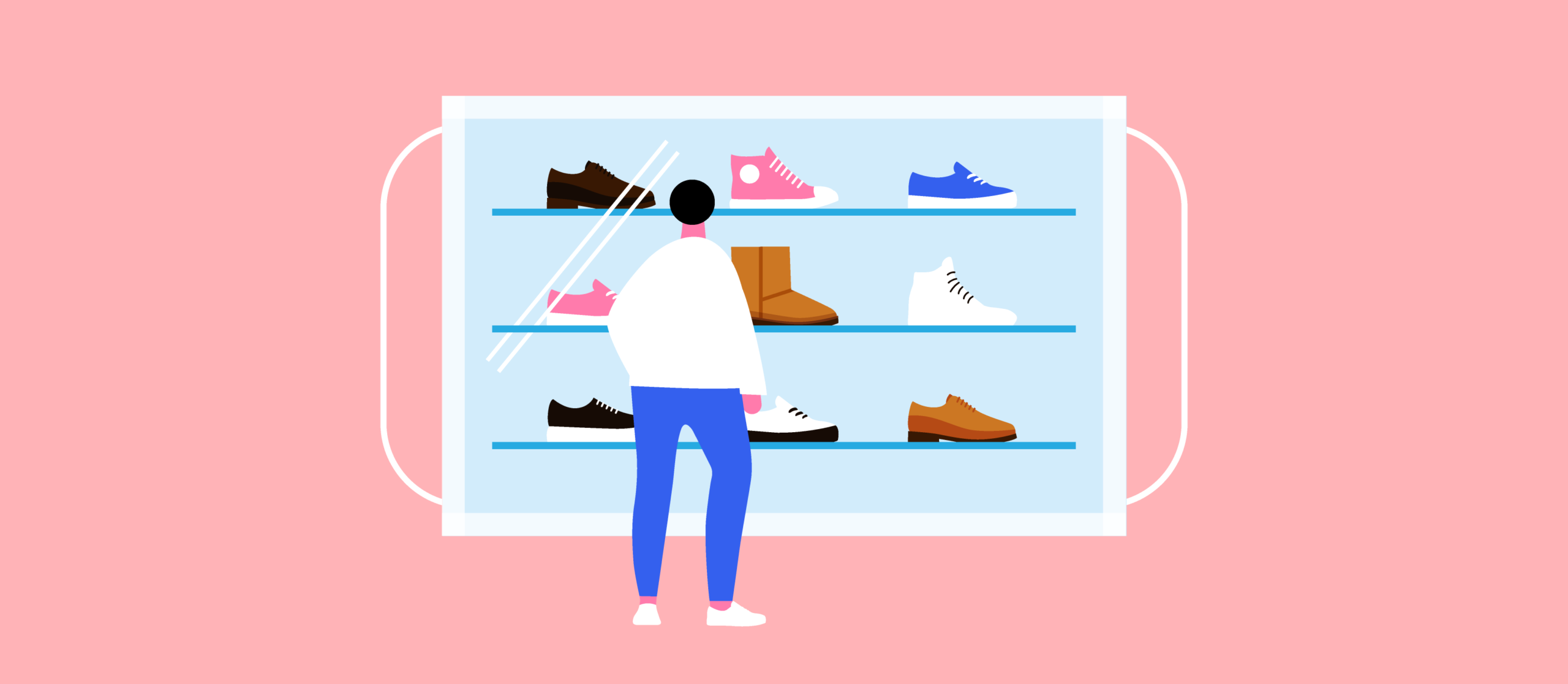November 12, 2020 — Article
As ecommerce channels are being ramped up, defining the role for stores has never been more important. During Covid, retail therapy became retail anxiety and the sense of discovery and spirit of browsing dampened. Retailers have a new responsibility to promote a sense of safety and wellbeing, with improved e-commerce and streamlined, contactless shopping services. But there’s also an opportunity to define the post-pandemic experience and stand out from the crowd with new ways to make shopping rewarding again. Brands with a well-defined purpose before the pandemic had a head-start because brand frameworks serve as quick response frameworks.
Customers are more likely to shop where they feel comfortable, and safety has become a more important customer value proposition. While many other retailers have become increasingly slapdash, Uniqlo continues to do temperature checks when people enter the store. Along with the extension of its AIRism sub-brand into AIRism face masks, which have been tested for bacteria filtration efficiency at Kaken Test Centre, this is in keeping with the brand’s usual thoroughness, thoughtfulness and emphasis on product technology.
Factorie talks a good game with in store announcements about customer safety, but the changing rooms send another message. The shaggy green carpets, which gave off a fun, astroturf vibe when installed, have defied the most persistent vacuum cleaners over the years.
It’s critical that frontline staff get extra training to protect themselves and customers. The company SafetyCulture, which traditionally focussed on sectors like mining and construction, has been working with more retailers to ensure their practices match their promises.
While the retail sector has prioritised customer experience, to date health and safety have not been a major part of that. Now retailers are having to learn quickly how to shore up their safety procedures and deliver and communicate them effectively. Health and safety will transition from compliance to competitive advantage. For example, extending its restaurant into a store and home delivery, Melbourne pizza institution 400 Gradi opened a pop-up grocery Gradi Mercato and pizza takeaway.
Others have used innovation in protection to make isolated customers feel more connected. Rather than rushing to an exclusively online experience, Los Angeles wine store Tilda cemented its place in the community by adapting its intimate wine bar to a wine and provisions store with contactless takeaway. It transformed its courtyard to become an enjoyable place to browse through large shop windows.
Touchy-feely, multi-sensory experiences are not exactly Covid-safe. So how can retailers still make shopping fun and create a sense of immersion? Shoppable windows have been used as promotional gimmicks for some years now, but their value today is clear. By maximising their displays so people can browse in the open air, retailers can make shopping enjoyable and safe at the same time.
Over the past few years, eBay, Adidas, House of Fraser and Bloomingdales, among others, have experimented with interactive shoppable window displays. Often used to support new launches, or retail events, these windows have generated excitement and drawn people into stores. They’ve also kept people out of stores at busy times, without losing their custom. With the ability to deliver on-pavement, they’ve provided instant gratification.
Partnerships and curation strategies can help promote safety by creating ‘go-to’ spaces where people know they’ll get what they want and can quickly and easily find it. We’re starting to see this with selected products from David Jones Food available at certain BP stores in NSW and Victoria. All have easy-access parking and self-service checkouts. Hema Fresh, the supermarket from China’s Alibaba now has several sub-brands. The original high-tech Hema is positioned at convenience-seeking millennials in first-tier cities. Hema Mini’s unpackaged, fresh produce offer caters to older, price-sensitive shoppers, who traditionally shop at their local vegetable market, while Hema F2 stores provide ready-to-eat deli foods and snacks geared toward office workers.
Going beyond tactics, Vans reinforces its purpose of enabling creative expression in youth culture, in everything it does. It continues to place great value on community stores as centres of boardsports culture and supporters of Vans. As part of its Foot The Bill initiative, struggling stores could jump on a custom engine, put their logo on Vans shoes and get proceeds from the sale. Customers in their neighbourhoods became advocates of selling more of these products.
Vans demonstrates that brands with a clear purpose and philosophy have a ready-made response framework. They didn’t have to start from scratch to brainstorm what to do. They simply asked the question, ‘How can we continue to enable creative expression in youth culture during the pandemic?’ A problem well-defined is a problem solved faster.
This article was first published on Inside Retail.





